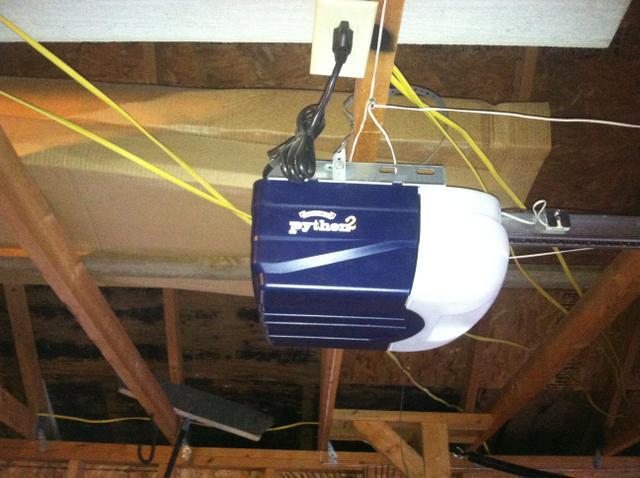Troubleshooting Guide: Fixing Issues with Python 2 Garage Door Opener
Having a functional garage door opener is essential for the smooth operation of your garage. If you’re using a Python 2 garage door opener and experiencing issues, this troubleshooting guide is here to help. Python 2 is a popular programming language for DIY projects, including garage door openers. In this article, we will walk you through common problems and provide step-by-step solutions to get your Python 2 garage door opener working again.

Understanding the Basics
Before diving into troubleshooting, let’s understand the basics of a garage door opener and how Python 2 is used to control it. A garage door opener consists of several components, including a motor, remote control, sensors, and wiring. Python 2 is a powerful programming language that allows you to write code to control these components and automate the opening and closing of your garage door.
Using Python 2 for your garage door opener provides flexibility and customization options. However, it’s essential to be aware of its limitations. Python 2 is an older version of the language, and as such, it may have compatibility issues with newer hardware or software dependencies.
Common Problems and Solutions
Garage Door Opener Not Responding
One common issue you may encounter is when your garage door opener doesn’t respond to the remote control or the code you’ve written in Python 2. Several factors can contribute to this problem. Start by checking the power supply to ensure the garage door opener is receiving power. Additionally, replace the batteries in the remote control and ensure it’s within the range of the opener. Verify the wireless connectivity between the remote and the opener. If these steps don’t resolve the issue, further troubleshooting may be necessary.
Python 2 Code Errors
If you’re experiencing issues with your Python 2 code, it may prevent the garage door opener from functioning correctly. Check for common code errors, such as syntax mistakes or logical errors. Debugging Python 2 code involves carefully reviewing your code, using print statements to track variables, and leveraging the Python debugger (PDB) if needed. By identifying and resolving code errors, you can restore the functionality of your garage door opener.
Hardware Issues
Sometimes, the problem lies in the hardware itself. Faulty wiring, damaged sensors, or motor problems can hinder the proper operation of your Python 2 garage door opener. Inspect the wiring connections for any loose or damaged wires. Ensure the sensors are properly aligned and not obstructed. If you suspect a motor issue, consider contacting a professional for assistance or replacing the motor if necessary.
Advanced Troubleshooting Techniques
If the basic troubleshooting steps don’t solve the problem, consider trying more advanced techniques.
Testing and Calibrating Sensors
Sensors play a crucial role in the functioning of a garage door opener. Improperly calibrated sensors can cause the door to malfunction. To test and calibrate the sensors, follow these steps:
- Identify the location of the sensors on your garage door opener.
- Clean any dirt or debris that may be blocking the sensors.
- Adjust the sensor alignment, ensuring they are facing each other and the LED indicators are lit.
- Test the sensors by opening and closing the garage door. If the door operates smoothly, the sensors are calibrated correctly.
Reinstalling Dependencies
If you’ve encountered compatibility issues with dependencies required for your Python 2 garage door opener, it may be necessary to reinstall them. Start by identifying any conflicting dependencies or outdated versions. Reinstall the necessary dependencies following the documentation provided by the respective software packages. Resolving dependency conflicts can often restore the functionality of your Python 2 garage door opener.
Upgrading to Python 3
Consider upgrading your Python 2 garage door opener to Python 3 for a more reliable and future-proof solution. Python 3 offers better compatibility with newer hardware and software libraries, ensuring a smoother operation of your garage door opener. Migrating your existing Python 2 code to Python 3 may require some modifications due to differences between the two versions. However, the long-term benefits of upgrading outweigh the initial effort.
Conclusion
Having a malfunctioning Python 2 garage door opener can be frustrating, but with the troubleshooting steps provided in this guide, you can identify and resolve the issues effectively. Remember to prioritize safety precautions while working with garage door openers and programming languages. By following the troubleshooting techniques outlined in this article, you’ll be well on your way to restoring the functionality of your Python 2 garage door opener and enjoying the convenience it brings to your daily life.



Leave a Reply